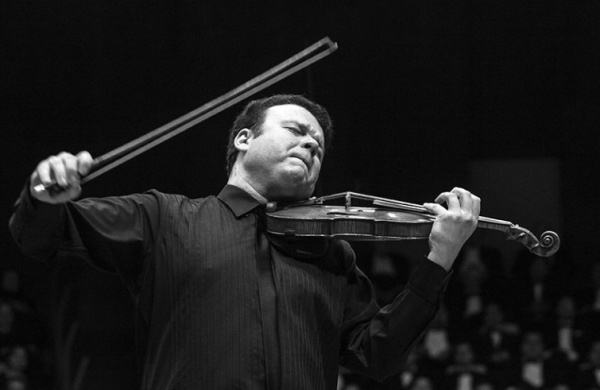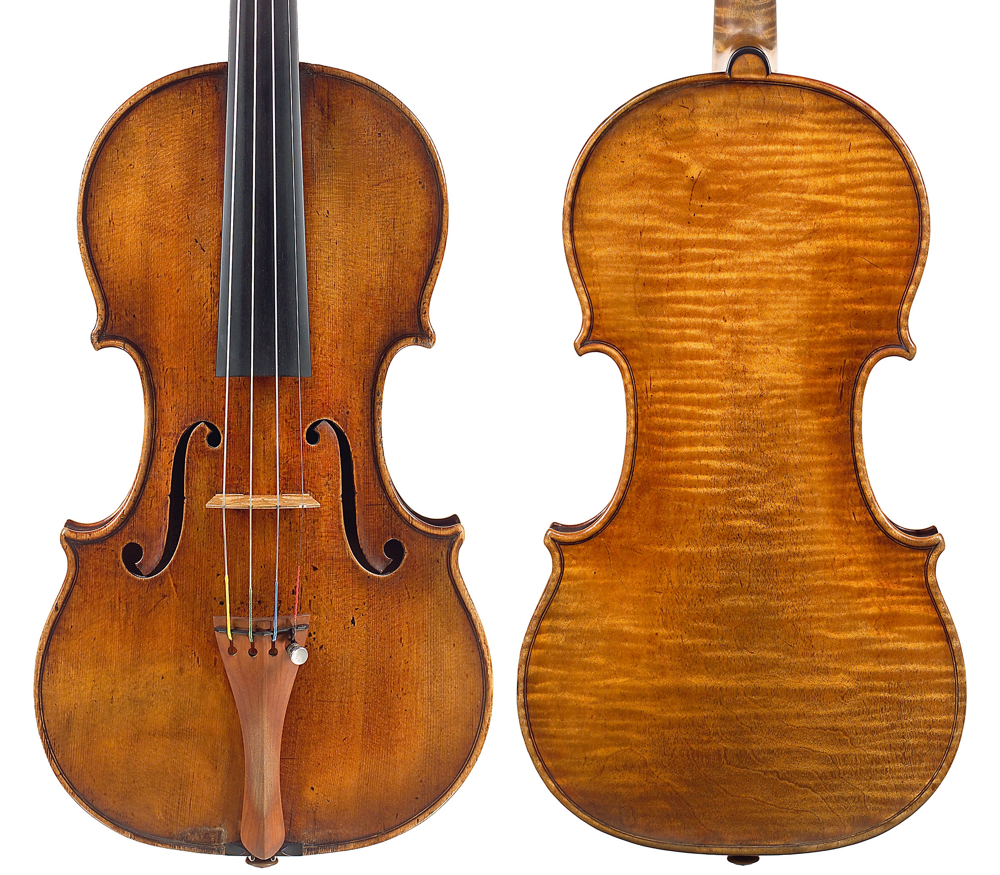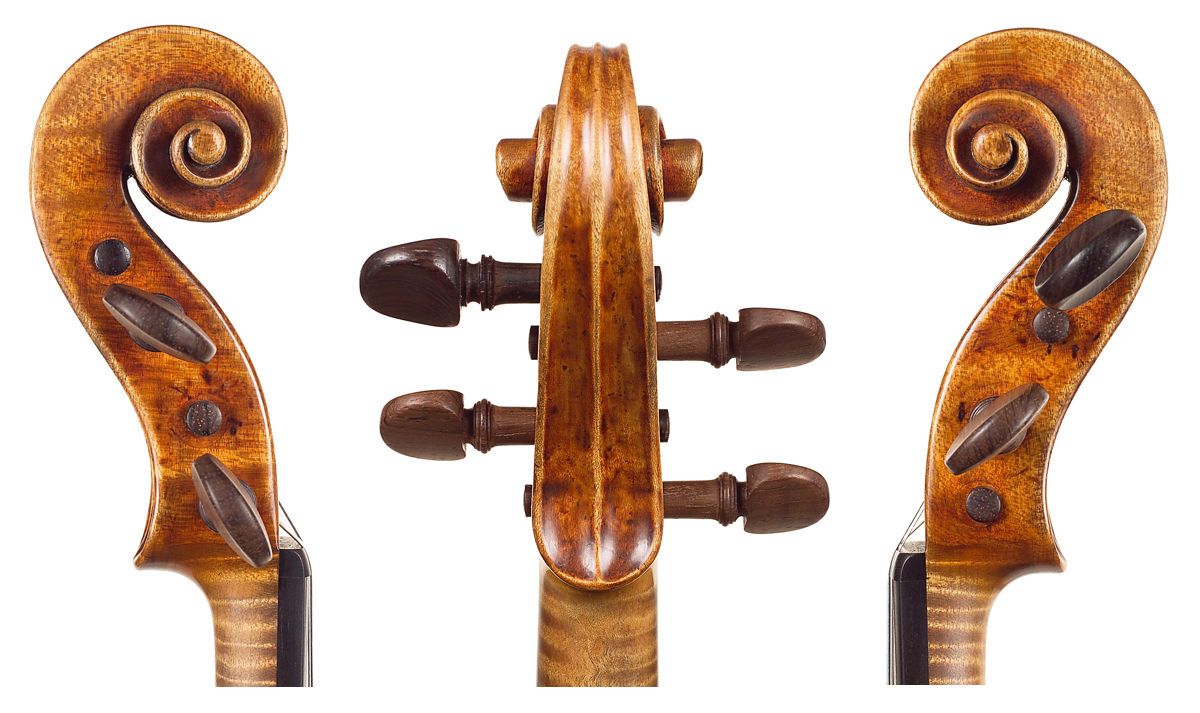Vadim Gluzman didn’t have much choice about the instrument he plays. But given that instrument was the 1690 ‘Auer’ Stradivari, this is not an issue. The violin was given to him on loan 17 years ago by the Stradivari Society. He remembers the first time he played it. ‘I had the distinct sensation that someone was looking at me from behind. I turned around and on the wall was hanging a gigantic portrait of Auer, looking directly at me. That was my first encounter. It was clear that my life was never going to be the same.’
After all that time together, the relationship continues to develop, to Gluzman’s continual amazement: ‘Its greatest quality is that it is developing all the time. Physically speaking it’s a better violin today than it was 17 years ago, on every level. It has the widest range of colour I could ask for. It’s incredibly dark on the bottom. I was just playing the Glazunov Concerto in Paris and as I started I thought, I sound like a violist! At the same time it’s very penetrating and sweet at the top. It’s a typical Strad, but it’s strange for an early Strad to sound as big as it does. Since we really learnt how to dance with each other, I’ve yet to have a balance problem in any piece I’ve played.’
How does one ‘learn how to dance’ with such a violin? ‘By trying and failing, and by being extremely sensitive. The violin talks to you, so you just listen to what it says and what it needs – carefully. A lot of it is about the balance between the right and left hands. This applies to any instrument: we shouldn’t be applying the same weight in both hands – it’s unnecessary and often it damages the quality of sound. This violin in particular is sensitive to that. Very often when I’m strong in the right hand I have to let go the left and even more vice versa: when I’m very light with the bow I cannot afford to be light in the articulation. It took me time to realise that I don’t need to work as hard as I used to.’
Gluzman tried another Strad once, but instantly knew it wasn’t for him. ‘It wasn’t my sound. What came out of this Strad had nothing to do with what I did with the bow. It was stunningly different.’ When he was told it was the 1714 ‘General Kyd’ (ID 40254), played by Itzhak Perlman for many of his greatest recordings, everything made sense. ‘It was exactly his sound. There is nothing we can do about it. The violin takes on certain vibrations – I’m sure we could prove it scientifically.’
The instrument takes its name from its previous owner, the great pedagogue Leopold Auer. If violins are so influenced by their past players, does Gluzman feel any sense of connection with Auer? ‘I get a sense of him when I play his repertoire. I’m sure that Tchaikovsky and Glazunov heard this instrument and when they were writing for Auer they had an idea of a certain color. I don’t think it’s a coincidence that both their concertos start on the same note on the same string, and also Tchaikovsky’s Souvenir de Florence, which was premiered by Auer. They were attracted to the lower register, which is really outstanding in the instrument.’
Gluzman, who was brought up in Riga, Latvia, was given his big break by Isaac Stern, who heard him in 1990 and offered him a scholarship, and later the loan of a 1711 Pietro Guarneri of Mantua, through the America-Israel Cultural Foundation. Playing an old Italian for the first time proved a shock: ‘I found myself not knowing what to do. Zukerman and Stern had to scream at the top of their lungs to transform my playing. I’d never had an expectation that I could produce such a wide range of colors, that emotions could be expressed in so many ways besides playing fast and loud. Being a Soviet kid that’s what I did.’
The Guarneri proved capricious. ‘It was quite severely damaged. It was composed of little pieces under the bridge: it looked like a jigsaw puzzle. But I learnt a lot about looking after a great instrument, and playing an instrument that is playing with you – you’re not alone any more.’ Gluzman had another life lesson when he had to give the Guarneri back: ‘I was lent the Strad so I called the foundation and said I’d be returning [the Guarneri]. I remember walking out on 57th Street in New York having given it back and I actually felt my heart for the first time. From that point I realised that this box is a life.’

Vadim Gluzman plays the ‘Auer’ in Mexico City: ‘Its greatest quality is that it is developing all the time.’
For Gluzman, the choice of bow is even more important than that of the instrument. He has two he plays equally, according to how he feels – a Peccatte once played by Ysaÿe and Szeryng, and one made specially for him by his friend Daniel Schmidt, who comes from a long line of bow makers in Dresden. He describes how he thinks when he tries a bow: ‘The first thing I sense is the connection to the string, how well the bow penetrates it. My biggest turn off is a bow that plays on the surface, even if it’s producing a quality sound. When I feel that the bow is not digging into the instrument itself, I’m immediately not interested.’
Even the best bows can fail this test: ‘I’m yet to try a Sartory I liked. He was one of the most reliable makers in history and you can turn squares into circles with his bows, except for with the sound. A bow’s basic sound is the first thing I look for – it’s like when you meet a person you look into their eyes. After that I need velocity, quick reaction, and for the articulation not to be delayed. I was considering a Maire a few months ago. I was almost in love, but the response was a bit delayed – there was a gap between the touch and the outcome, and I decided I couldn’t live with that. I’m also looking for a bow that will let me enter the string right at the frog, so you can apply your weight immediately. Then there’s the tip: even with great bows it takes a lot of effort to sustain at the tip and you need to develop your technique, but I’m looking for a bow that will at least help me do that.’
Ariane Todes was formerly editor of The Strad magazine and is now a freelance writer and editor.

